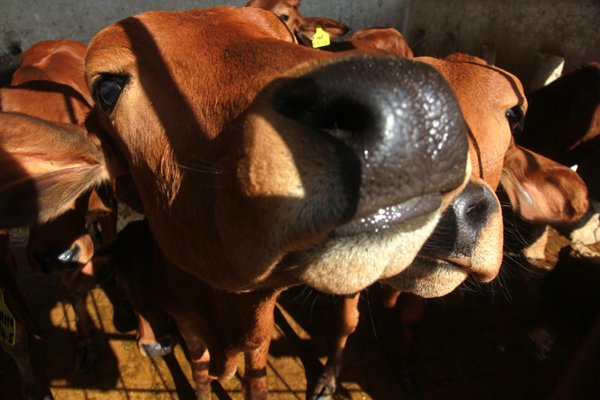
Safi, a three-month-old red-coloured playful calf, quickly ran towards her mother for her day's milk needs.
Later came the turns of Marvi and Sindhri, two more calves who were waiting for their mothers to enter the open shed, turn by turn, to feed them. The calves, usually identified at the facility by the names of their mothers, belonged to the famous local breed commonly known as the 'Red Sindhi' cattle.
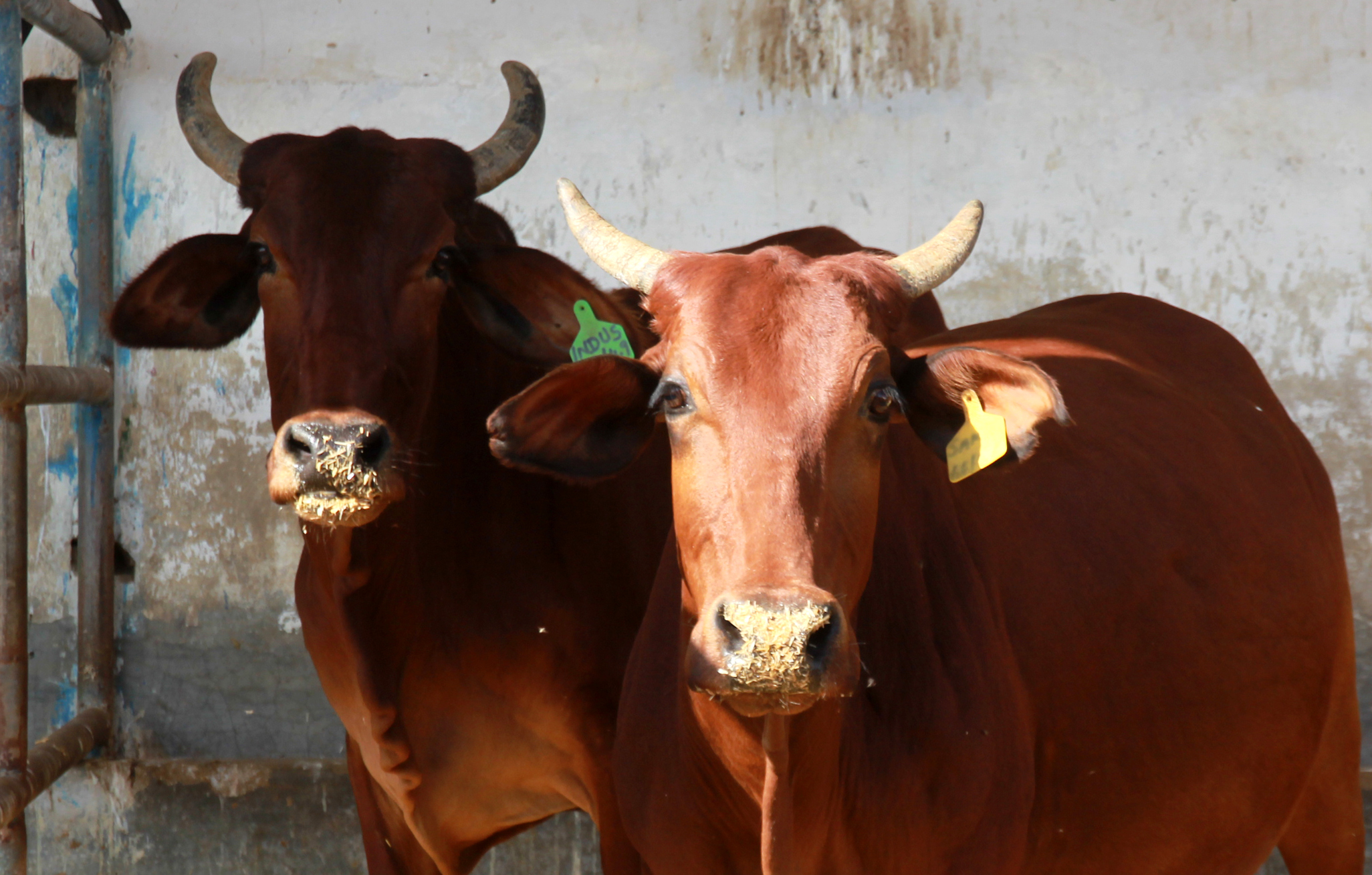 'Red Sindhi' cattle have a medium-sized build, compact body and a deep reddish-brown skin. PHOTO: ATHAR KHAN/ EXPRESS
'Red Sindhi' cattle have a medium-sized build, compact body and a deep reddish-brown skin. PHOTO: ATHAR KHAN/ EXPRESSThe livestock experiment station, founded in 1923 by the British government to protect the indigenous 'Red Sindhi' cattle from extinction, was earlier known as 'Wellington Cattle Farm' and is currently spread over 535 acres of land.
Livestock, dairy, poultry fair: Sindh govt working on achieving food security
"The aim of the facility was to maintain Sindh's red cattle with high potentialities for transmitting valuable character to their progeny," said Dr Mohan Lal Rajput, the officer in charge of the facility, adding that the facility also aimed to conduct experiments and research on improving the fertility, milk production and disease resistance of the breed through scientific feeding, breeding and management practices.
"We have succeeded in protecting and producing pure-bred Red Sindhi cattle, otherwise they would have gone extinct," said Rajput, remarking that they also supply 5,000 dozes of semen every month throughout the province for artificial insemination at a very nominal fee of Rs5 per doze to increase the population of the breed in the province.
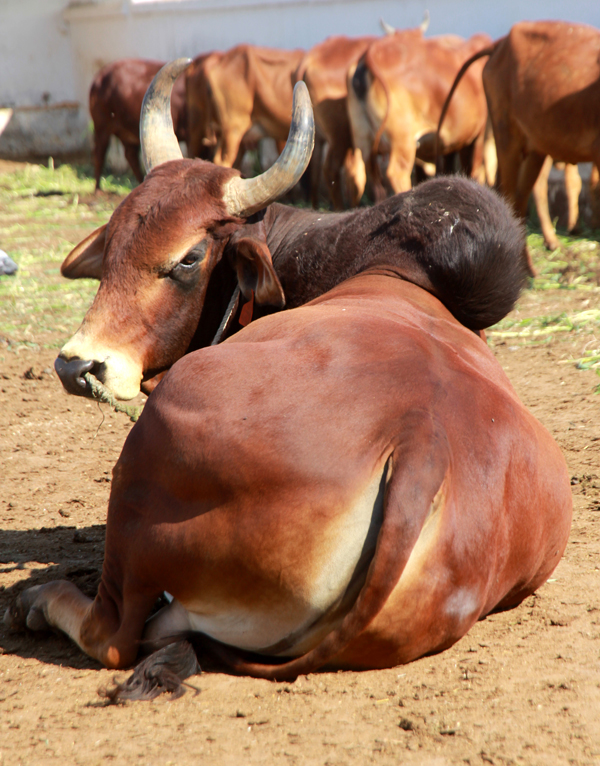 The cows' hind quarters are round and drooping and tail switch is black. PHOTO ATHAR KHAN/ EXPRESS
The cows' hind quarters are round and drooping and tail switch is black. PHOTO ATHAR KHAN/ EXPRESSThe breed is generally heavier than the famous Sahiwal cattle breed of Punjab, he said.
"This [Red Sindhi] breed originates from a mountainous region called Mahal Kohistan and is spread over parts of Karachi, Thatta and Dadu districts in Sindh," he said, sharing that the breed extends to the irrigated areas of Hyderabad and the arid plains of District Lasbela in Balochistan.
Camel milk: Better research, marketing can enhance production, says experts
The anatomy of a 'Red Sindhi' cow
Explaining their physical features, Rajput stated that they have a medium-sized build, compact body and a deep reddish-brown skin. The cows found near Lasbela are comparatively darker and the colour of the bull is likely to be darker on the shoulders.
It has a large head with an occasional bulge in the forehead with thick horns that are stumpy in males and thin in females, he continued to explain. He added their ears are fine and small and the hump is well-developed in males while the sheath is pendulous in males and nominal in females. Their hind quarters are round and drooping and tail switch is black.
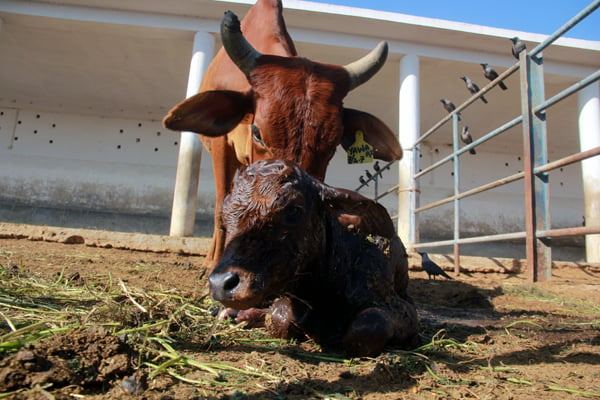 A 'Red Sindhi' cow, Yawa, with her newborn calf. PHOTO: ATHAR KHAN/ EXPRESS
A 'Red Sindhi' cow, Yawa, with her newborn calf. PHOTO: ATHAR KHAN/ EXPRESSHow it works
Currently, the facility has around 240 animals and each has a tag mentioning its date of birth and name. The cattle are separated into four sheds of suckler, heifer, milk cows and dry cows, according to age. Animal fodder is also grown in the premises.
The facility has a minimal budget of Rs9.2 million while it also generates its own revenue by selling milk and auctioning the heifers to interested buyers.
Livestock productivity: Pak-US varsities initiate several research projects
The average life expectancy of the breed is 15 to 20 years and the milk yield per lactation cycle of 305 days varies between 1,500 litres and 2,000 litres.
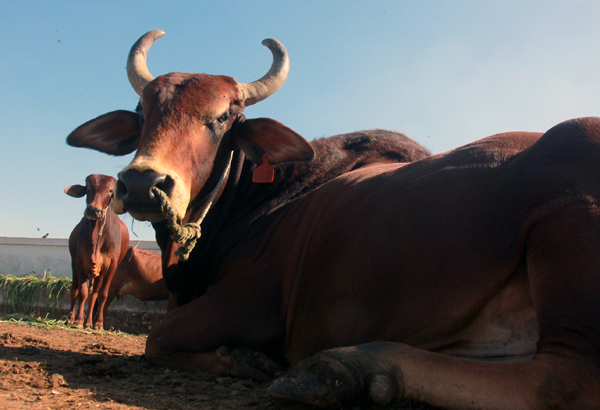 The cows found near Lasbela are comparatively darker and the colour of the bull is likely to be darker on the shoulders. PHOTO: ATHAR KHAN/ EXPRESS
The cows found near Lasbela are comparatively darker and the colour of the bull is likely to be darker on the shoulders. PHOTO: ATHAR KHAN/ EXPRESSMeanwhile, reproduction at the facility is allowed to happen naturally since the pure breed is disease-resistant, said Dr Rajput, adding the mortality rate at the facility is zero since they are a pure breed.
 The average life expectancy of the breed is 15 to 20 years. PHOTO: ATHAR KHAN/ EXPRESS
The average life expectancy of the breed is 15 to 20 years. PHOTO: ATHAR KHAN/ EXPRESSGood for health
The milk obtained from the 'Red Sindhi' cattle has a low fat level and is beneficial for children and those with heart diseases, said Dr Rajput while talking about the benefits of the breed. He added the breed has a high potential since it can meet milk and meat needs locally.




1732003896-0/Zendaya-(1)1732003896-0-165x106.webp)












COMMENTS (1)
Comments are moderated and generally will be posted if they are on-topic and not abusive.
For more information, please see our Comments FAQ